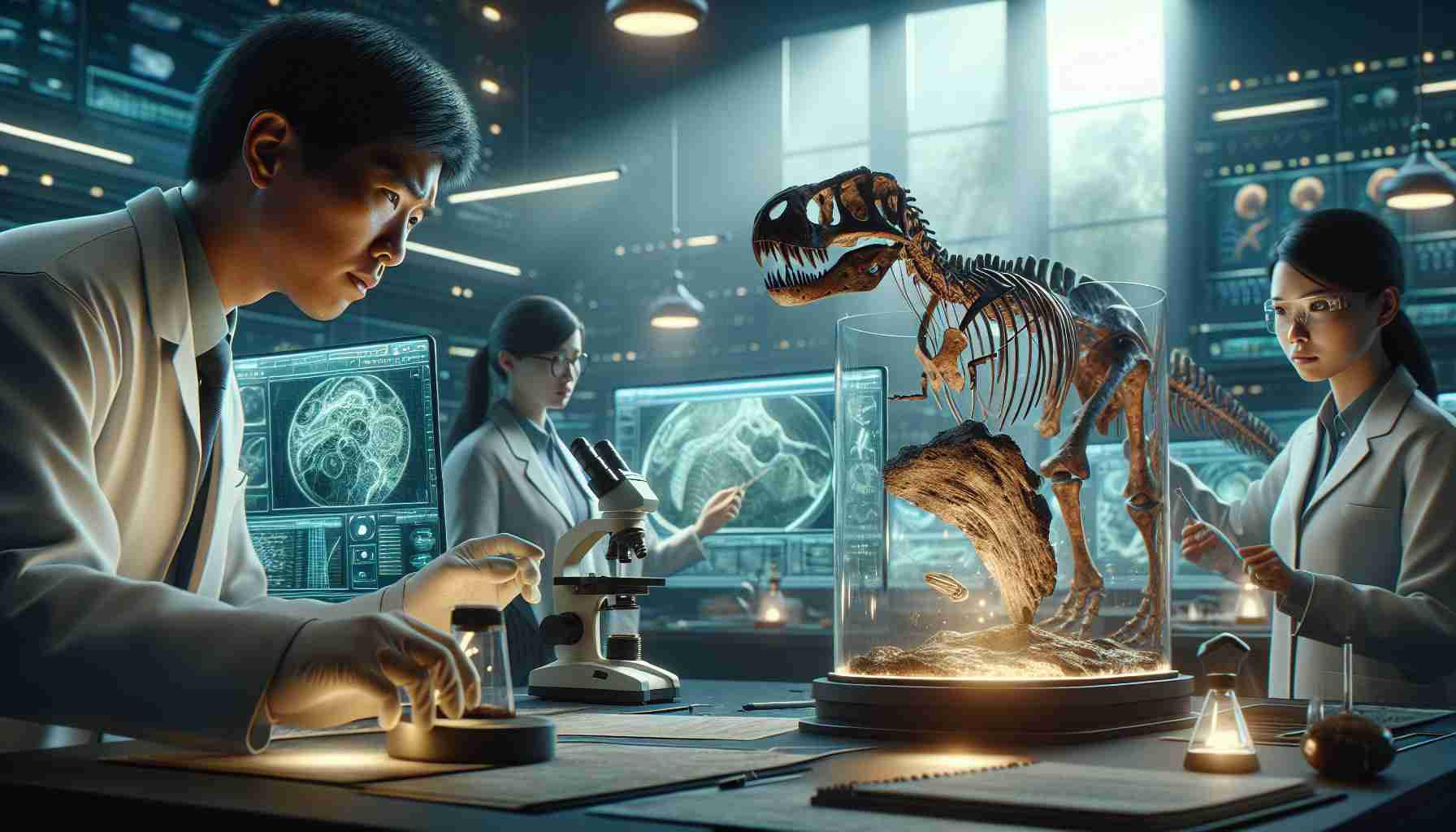- Researchers discovered traces of decaying collagen in a dinosaur fossil, specifically from an Edmontosaurus, challenging previous beliefs about organic materials in fossils.
- Fossil excavation occurred in South Dakota’s Hell Creek Formation, known for yielding significant dinosaur finds.
- The study utilized advanced techniques, like cross-polarized light microscopy, to identify the presence of hydroxyproline, a collagen component.
- This discovery implies that the biological remnants of ancient creatures are more substantial and enduring than previously thought.
- Experts advocate for reevaluating existing fossil records to potentially uncover deeper insights into dinosaur evolution.
In a groundbreaking revelation, researchers have unearthed undeniable traces of decaying collagen in a dinosaur fossil, challenging long-standing beliefs about organic materials in ancient remains. This remarkable discovery centers on a well-preserved sacrum from an Edmontosaurus, a duck-billed giant that roamed the Earth approximately 73 million years ago, alongside iconic creatures like the T. rex.
Excavated from South Dakota’s Hell Creek Formation, this fossil not only gives a glimpse into the past but also shatters the myth that any organics found in fossils are merely contaminants. Experts from the University of Liverpool employed cutting-edge techniques, including cross-polarized light microscopy, to identify hydroxyproline—a key component of collagen—proving that these ancient proteins are indeed part of the fossilized material.
The findings are revolutionary; they suggest that the biological legacy left by these magnificent creatures could be more extensive than previously imagined. The short sequences of hydroxyproline discovered support the idea of ancient collagen’s survival despite the ravages of time.
This exciting research pushes the boundaries of our understanding, hinting that much more lies beneath the surface of already-excavated fossils. As the scientists recommend revisiting historical imagery of fossilized bones, we may soon unlock fresh insights into the evolutionary connections among dinosaurs.
Key Takeaway: Organic materials, such as collagen, can persist in fossils longer than believed, opening new avenues for exploring our planet’s prehistoric life.
Unlocking the Secrets of Dinosaur Fossils: New Discoveries on Collagen Persistence
In a groundbreaking finding, researchers have identified traces of decaying collagen in a dinosaur fossil that challenges the long-standing perceptions of organic materials in ancient remains. This fascinating discovery revolves around a well-preserved sacrum from an Edmontosaurus, a duck-billed giant from approximately 73 million years ago. This Edmontosaurus coexisted with legendary creatures like the T. rex and offers a captivating glimpse into the Mesozoic era.
Newly Identified Aspects of Collagen in Fossils
Researchers from the University of Liverpool utilized advanced techniques, notably cross-polarized light microscopy, to detect hydroxyproline—a crucial component of collagen—within the fossilized bone material. This discovery proves the presence of ancient proteins within the fossil structure, dispelling previous doubts regarding their existence and suggesting that the biological remnants of dinosaurs could have survived far longer than previously thought.
# Key Features of the Discovery:
– Detection Techniques: The employment of sophisticated imaging and analytical techniques marks a significant leap in paleontological methods.
– Potential for More Discoveries: The researchers advocate for a reevaluation of existing fossils using modern technologies to uncover traces of organic materials that may have been overlooked.
– Implications for Evolutionary Studies: The presence of collagen may provide insights into the evolution and physiology of dinosaurs, potentially bridging gaps in our understanding of their biology.
Related Questions
# 1. What does the discovery of collagen in fossils indicate about the preservation of ancient organic material?
The detection of collagen indicates that organic materials, particularly proteins, can persist in fossils much longer than traditionally accepted. This discovery opens avenues for investigating the biochemical makeup of ancient species and could lead to rewriting aspects of dinosaur biology and evolution.
# 2. How can this finding influence future paleontological research?
This finding can inspire paleontologists to revisit previously excavated fossils with advanced techniques, potentially uncovering further biological remnants that could provide deeper insights into the life and environments of dinosaurs. It may also encourage the development of new methodologies in fossil analysis aimed at assessing organic preservation.
# 3. What are the implications for our understanding of evolutionary biology?
The ability to analyze ancient proteins allows scientists to make more accurate connections between extinct species and their modern descendants. This could provide new data on evolutionary trends and survival strategies, enhancing our overall understanding of the history of life on Earth.
Conclusion
This revelation of collagen within dinosaur fossils significantly alters our understanding of organic material preservation in paleontology. It invites a reassessment of existing fossil records and emphasizes the continuous need for innovation in research approaches. The edges of knowledge surrounding the lives of these ancient creatures continue to broaden, underscoring the importance of not only discovering but also critically re-evaluating the past.
For further insights on paleontology and the latest research findings, visit Natural History Museum.













